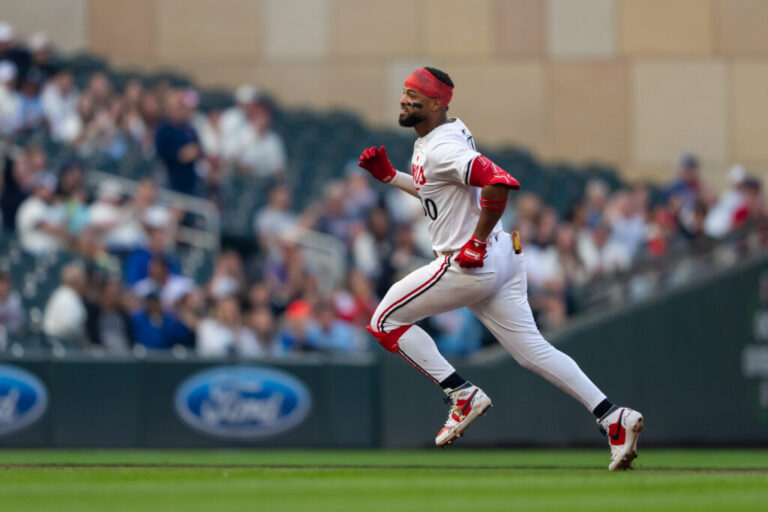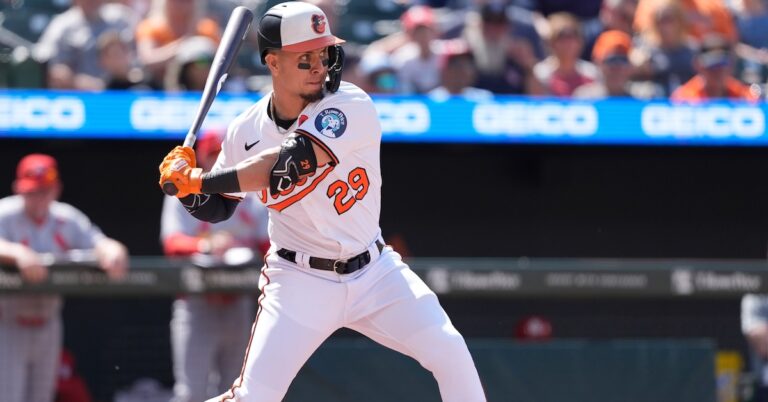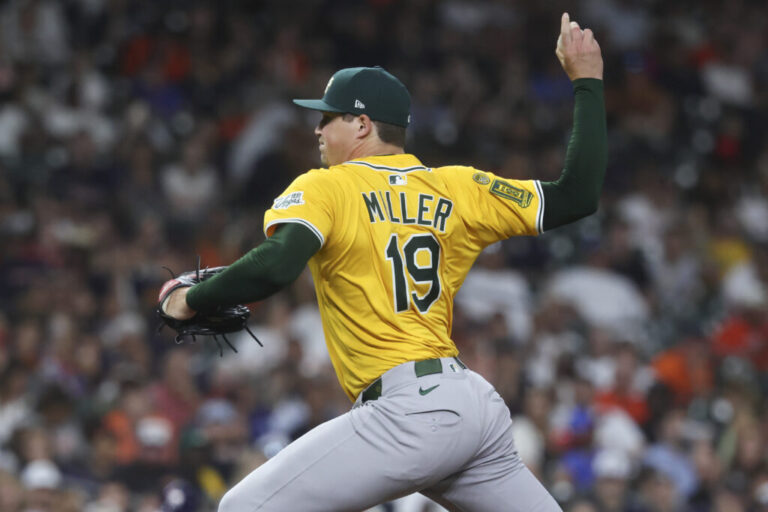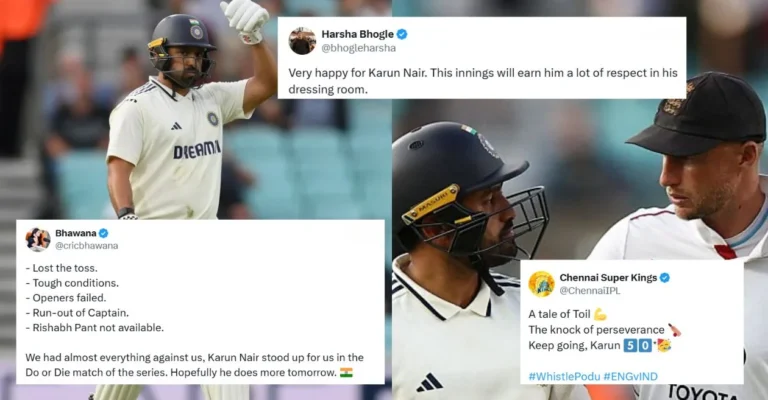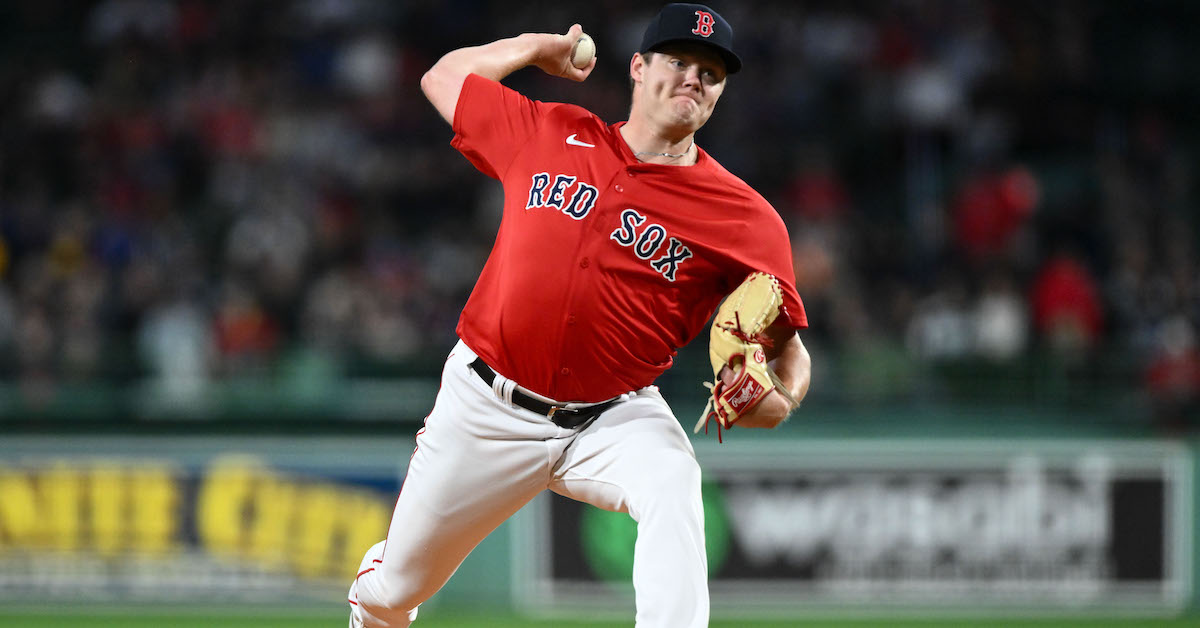

When I interviewed him back in January, Richard Fitts told me that his goal was to be a longtime big leaguer in Boston, and that his focus was simply on becoming the best version of himself. He’s since taken important steps on both fronts. The 24-year-old right-hander worked on fine-tuning his repertoire and usage at Triple-A Worcester, then impressed after receiving his first call-up in September. Moreover, he etched his name into the record books. Fitts didn’t allow an earned run over his initial 18 2/3 innings — this over three-plus starts — the most ever for a Red Sox pitcher to begin his career. As of right now, Roster Resource projects Fitts to be in the Red Sox rotation next season, though that could change depending on Lucas Giolito’s health and whether they sign a frontline starter or two this winter.
The Auburn University product had recently come to Boston via trade when we spoke 11 months ago. A sixth-round pick in the 2021 draft, Fitts was acquired along with Greg Weissert and Nicholas Judice from the New York Yankees in exchange for Alex Verdugo. At the time he’d been relying primarily on a four-seam fastball, with a slider serving as his best secondary. He described the latter as being “a little bit in between” a conventional slider and a sweeper.
How does the current iteration of the 6-foot-4, 245-pound hurler compare to the one I’d spoken to last winter? Is he basically the same pitcher? I asked him those questions on the final day of the regular season.
“No, definitely not,” replied Fitts, who finished his four-game cup of coffee with a 1.74 ERA, 3.31 FIP, and nine strikeouts over 20 2/3 innings. “I’ve grown a lot, learning how my pitches work in zone, out of zone, and to different kinds of hitters. I worked a lot on my usages throughout the year. I’m throwing fewer fastballs than I was at the beginning of the season. I’m feeling good about where my steps have taken me, and I have a lot more to accomplish in the offseason.”
A priority is improving the frequency with which he punches out hitters. Fitts logged solid strikeout numbers in the minors, but his K-rate in his MLB cameo was a paltry 10.6%.
“I want to sharpen everything going into next season, but if I were to dial it down, it’s about my two-strike execution,” explained Fitts. “We definitely saw that in my last outing, against the Blue Jays. I was getting to two strikes really well, but I wasn’t able to finish guys off. I need to make better pitches in those situations.”
The game in Toronto was when he finally surrendered earned runs, Alejandro Kirk doing bulk of the damage with RBI hits in both the fourth and fifth innings. But while Fitts failed to execute in a handful of at-bats that day, his performances in a Red Sox uniform were certainly noteworthy. Which isn’t to say that Fitts was overly impressed with himself. He wasn’t. Asked if he actually pitched better in his four big league outings than he did over his 24 in the minors — he had a 4.17 ERA and a 4.86 FIP in Worcester — the savvy youngster supplied an insightful answer.
“I don’t think I was necessarily better here,” said Fitts, whose 22.6% K-rate in Triple-A was more than double what it was in the majors. “It’s just kind of how things work out. Sometimes you’ve got the guys [positioned] in the right spot. I wasn’t striking guys out here. Guys were putting the ball in play, and that leaves room for the ball to fall in certain places. My goal for next year is to be able to strike more guys out at this level, and move on from there.”
Which brings us to the “how,” and the quality of his individual pitches. While Fitts’ fastball has “always been my bread and butter, especially from Double-A on down,” he fully recognizes that he has gotten less swing-and-miss with it at the highest levels, hence the increased usage of his other offerings. As for the overall quality of his heater, it has remained essentially the same. Movement is another story.
“I’m cutting it a little bit more with the big league ball than I was with the minor league ball,” said Fitts, whose fastball averaged 94.5 mph this season. “I’m not losing any vert — I still have 18-20 [inches] — but I’m also facing hitters who are a lot better. That’s why I’ve needed to mix in my other pitches more often.”
Asked to elaborate on the movement difference, Fitts said he is getting around one inch of arm-side horizontal, whereas last year his horizontal movement was around six to seven inches to the arm side. The change hasn’t exactly come as a surprise.
“Back when I was with the Yankees, they had me experiment with a big-league ball a little bit, just to get me used to it before I moved up to Triple-A, and they hypothesized that I would get more cut on it,” Fitts said. “Then, once I got to last offseason, I started throwing the big league ball and saw that I was getting more horizontal [movement to the glove side]. I thought it was a bad thing at first, but I’ve kind of embraced it. I actually kind of like it.”
Fitts isn’t sure how much the difference in baseballs might have impacted his sweeper, a pitch he threw 13.4% of the time with Boston, but he does know that it has gotten better. Whereas he was getting just eight inches of horizontal movement in 2023, he now averages 14. His gyro slider, which he threw 31.2% of the time, averages around five inches of horizontal break.
As for his fastball, even though he decreased its usage this season, Fitts still considers it his go-to pitch.
“I still think my fastball is really good,” said Fitts, who threw his four-seamer 44.6% of the time to the tune of a .200 BAA during his brief MLB stint. “I’ve worked really hard on my changeup [which Statcast calls a splitter], but the gyro slider and the fastball have kind of been the two-pitch mix for me. It’s just a matter of me mixing better, and obviously executing better.”
